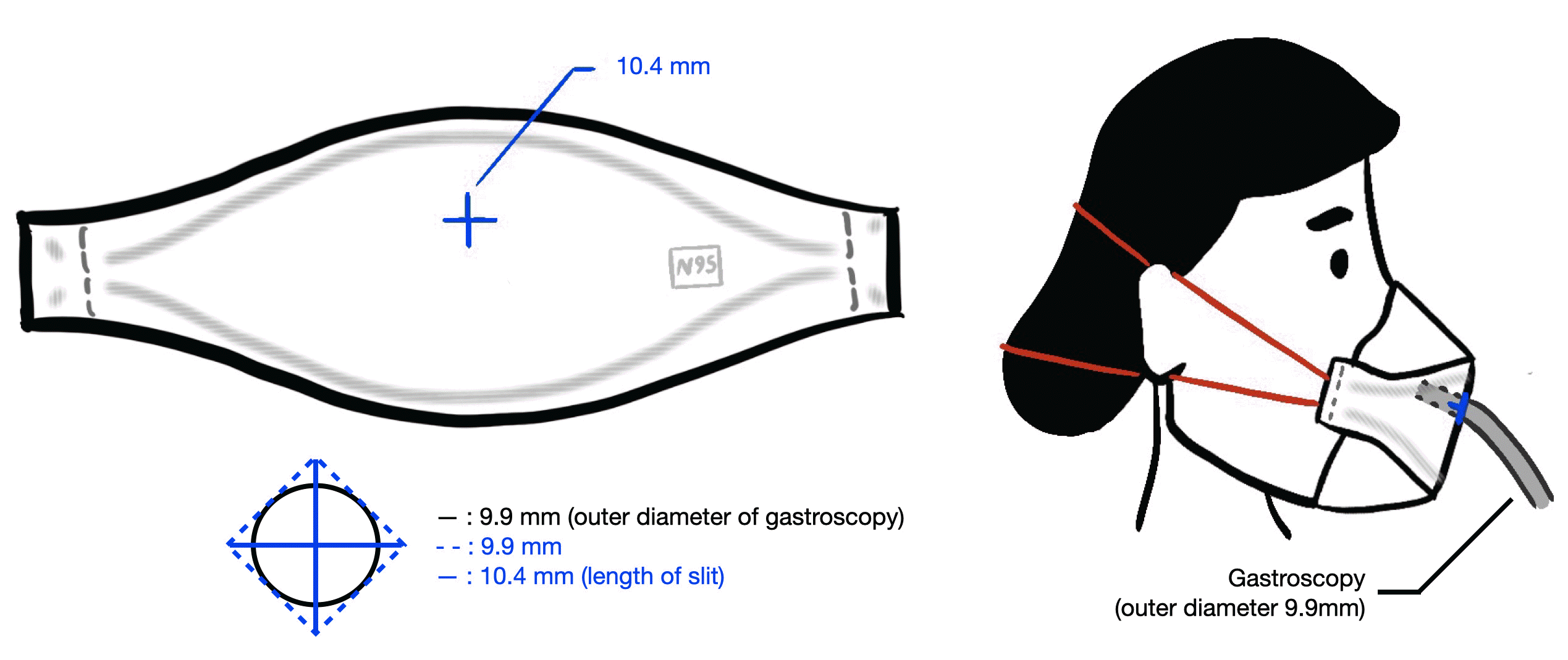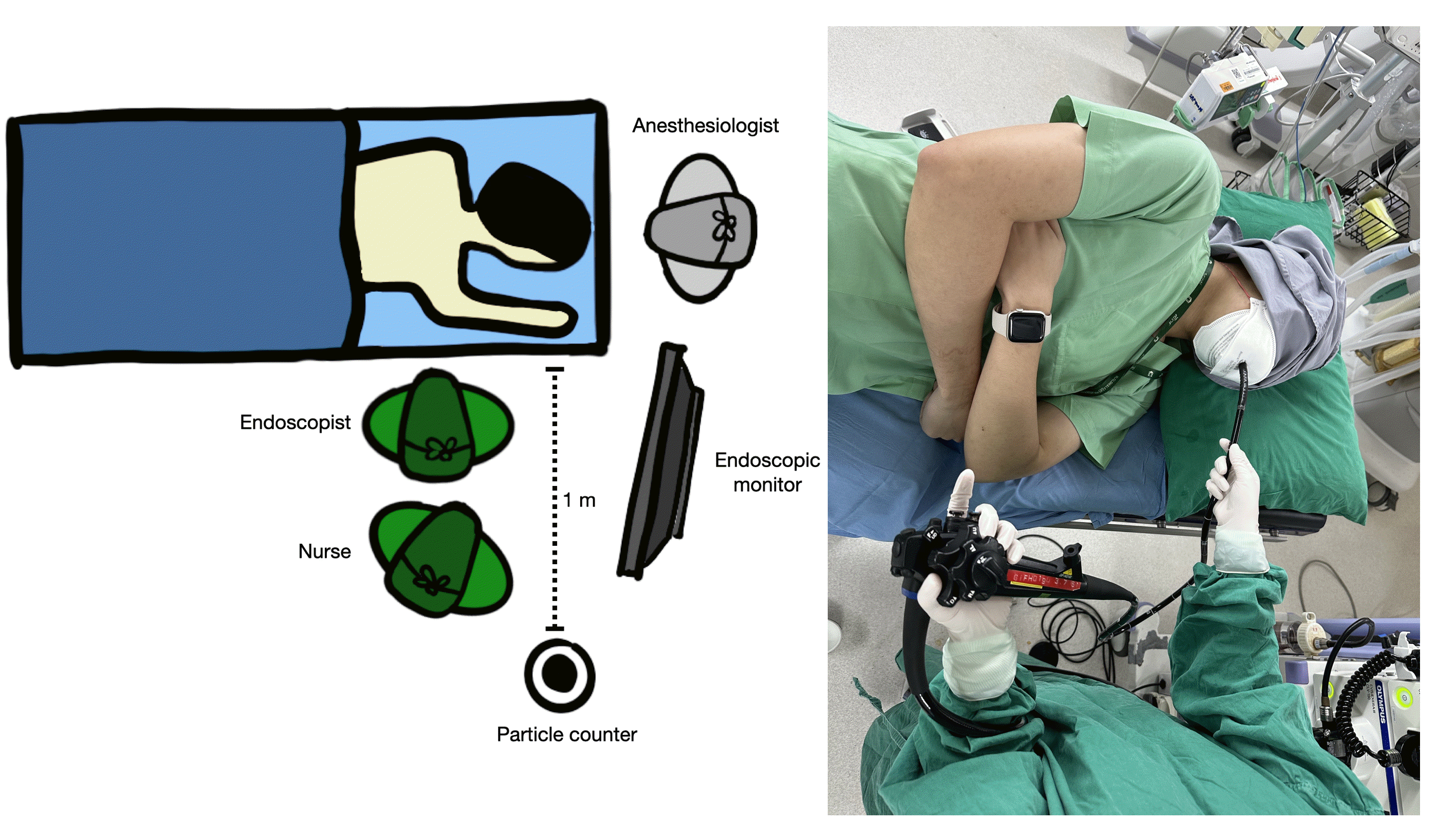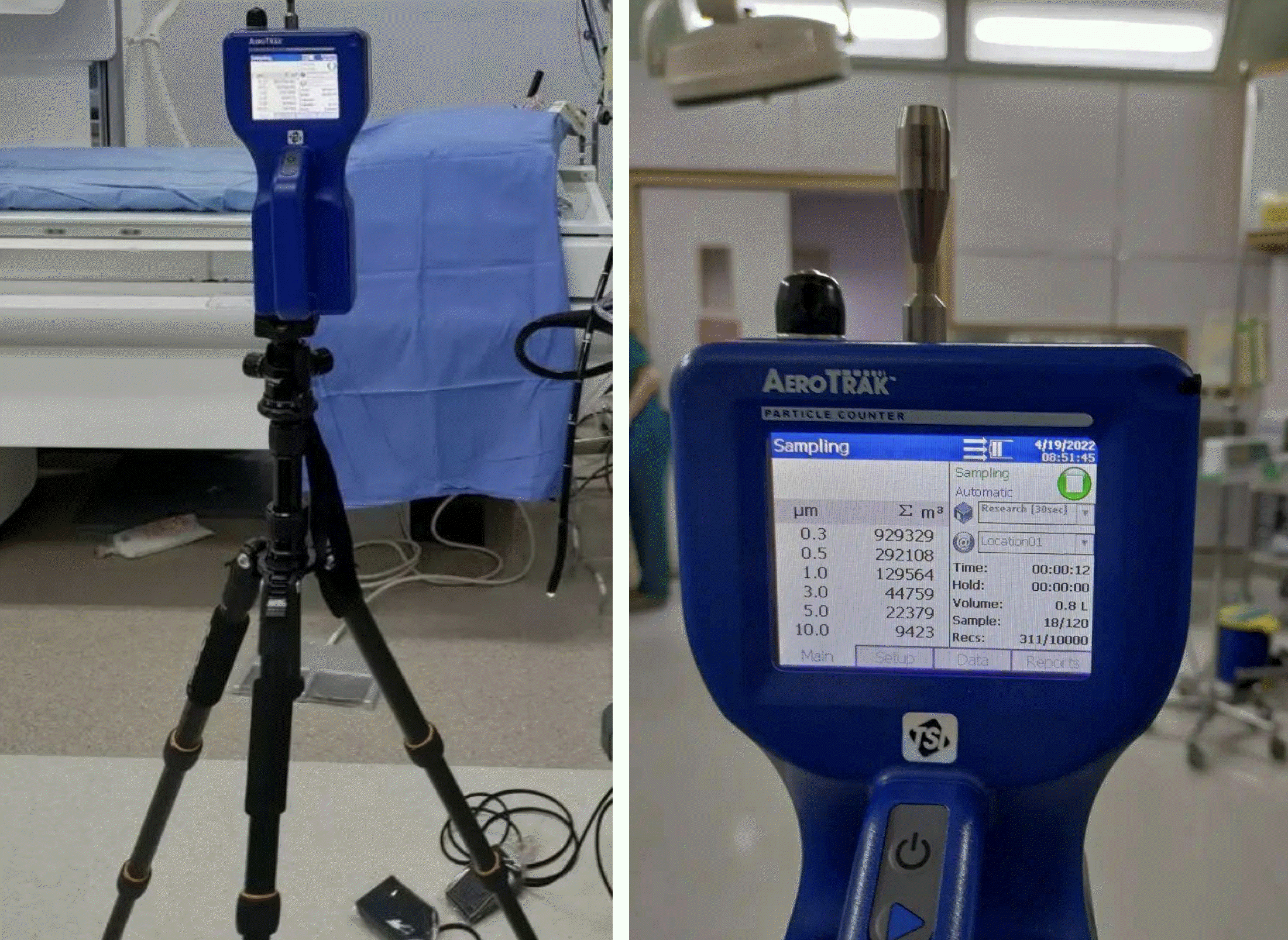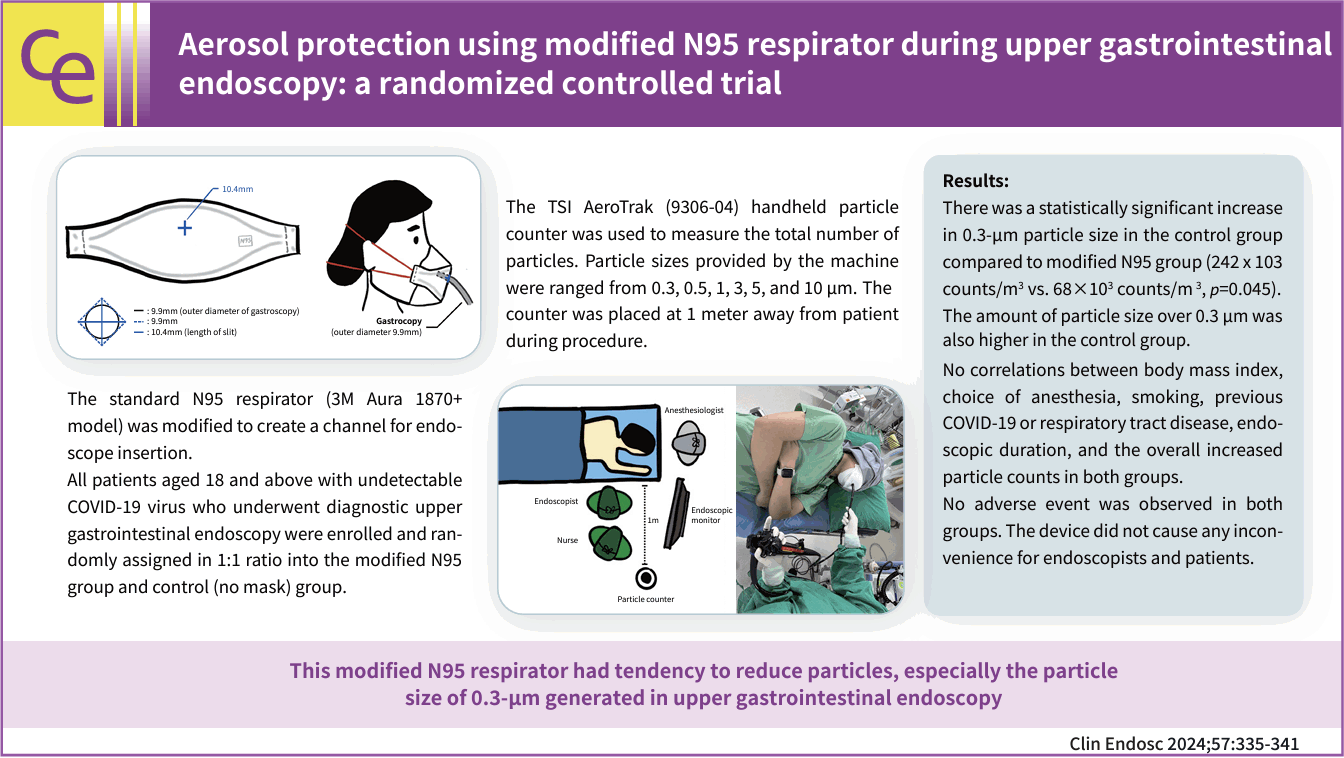Abstract
Background/Aims
Methods
Results
Notes
Acknowledgments
We thank Mr. Asadavudh Buachum and Miss Kanyanat Changpan from the Occupational Health Division for their cooperation with the particle measurements and Dr. Saowalak Hunnangkul for her assistance with the statistical analysis.
Author Contributions
Conceptualization: CN, TA; Data curation: CN, TA, TT; Formal analysis: CN, TA; Investigation: CN, TA, AM, TS; Methodology: CN, TA, VC; Project administration: CN, TA, JS, TP, TT; Resources: CN; Supervision: TA, VC, AM, VL; Validation: CN, TA, VL; Visualization: JS, AT, CP, TP, VT, NS; Writing–original draft: CN; Writing–review & editing: all authors.
REFERENCES
Fig. 1.

Fig. 3.

Table 1.
| Variable | Modified N95 (n=15) | No mask (n=15) | p-value |
|---|---|---|---|
| Age (yr) | 63.9±12.6 | 60.4±16.6 | 0.697 |
| Body mass index (kg/m2) | 23.9 (22.9–26.3) | 24.9 (23.5–26.6) | 0.414 |
| Female | 6 (40.0) | 10 (66.7) | 0.272 |
| Anesthesia | 0.056 | ||
| Topical | 0 (0) | 4 (26.7) | |
| Total intravenous anesthesia | 5 (33.3) | 6 (40.0) | |
| Both | 10 (66.7) | 5 (33.3) | |
| Smoking | 0 (0) | 3 (20.0) | 0.224 |
| Previous coronavirus disease 2019 infection | 0 (0) | 2 (13.3) | 0.483 |
| History of lung cancer or tuberculosis | 2 (13.3) | 2 (13.3) | >0.999 |
| Endoscopist | 0.682 | ||
| Staff | 3 (20.0) | 5 (33.3) | |
| Resident/fellow | 12 (80.0) | 10 (66.7) | |
| Endoscopic room | 0.245 | ||
| A | 12 (80.0) | 8 (53.3) | |
| B | 3 (20.0) | 7 (46.7) | |
| Endoscopic diagnosis: benigna) | 15 (100.0) | 12 (80.0) | 0.224 |
| Procedure time (min) | 14 (10–20) | 15 (11–22) | 0.165 |
| Add-on proceduresb) | 14 (93.3) | 13 (86.7) | >0.999 |
a) A common diagnosis was benign disease: gastritis in 13 patients (43%), gastric ulcers in 3 (10%), intestinal metaplasia in 3 (10%), subepithelial lesions in 3 (10%), gastric polyps in 2 (7%), reflux esophagitis in 1 (3%), and normal in 2 (7%).
b) Add-on procedures included a rapid urease test in 11 patients (37%), tissue biopsy in 3 (10%), and both in 13 (43%). Pathology reports of tissue biopsy included six of gastritis, six of gastric intestinal metaplasia, one of adenomatous polyp of the duodenal bulb, one of diffuse large B-cell lymphoma of the stomach, and one of squamous cell carcinoma of the upper esophagus.




 PDF
PDF Citation
Citation Print
Print





 XML Download
XML Download